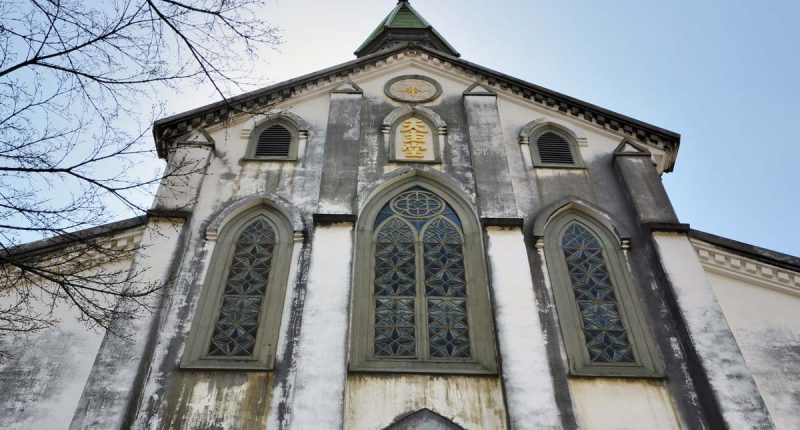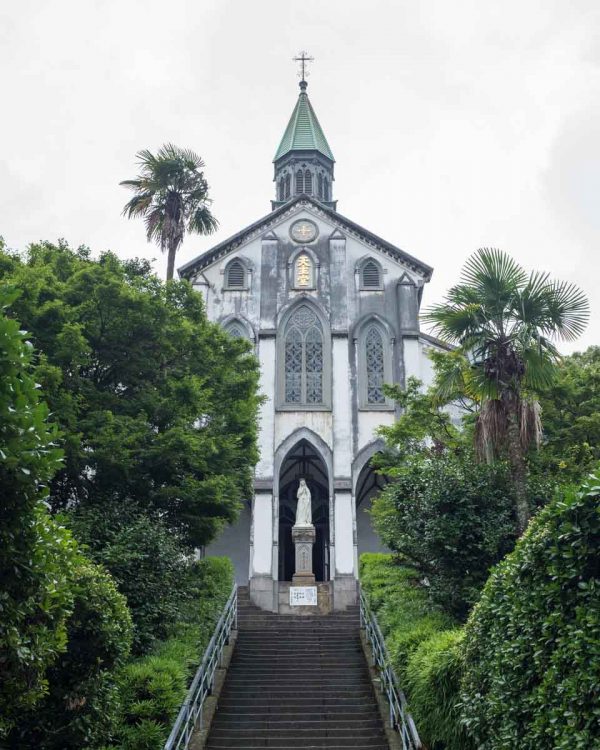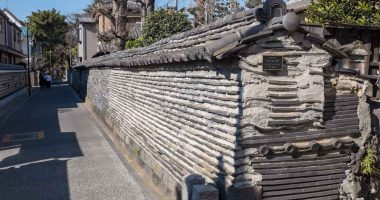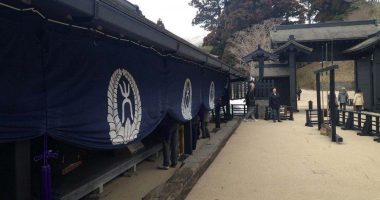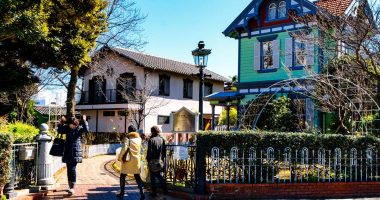Oura Church (大浦天主堂, Ōura Tenshudō) is the oldest church in Japan. It was built in 1864 in memory of the 26 martyrs who were crucified on Nishizaka Hill in 1597 on the orders of Hideyoshi Toyotomi, and is a designated National Treasure of Japan, as well as a recognized Minor Basilica. It’s official name is “Oura Catholic Church, The Church of 26 Martyrs” and bronze plaque build in memory of the martyrs in the grounds of the church was positioned to directly face the monument that stands at the site of the execution.
It is also well known for its role in re-discovering Japan’s “hidden Christians” (隠れキリシタン, kakure-kirishitan)—descendants of those Japanese who went into hiding or fled to remote places such as the Goto Islands and Hirado to escape persecution after the Shimabara Rebellion of 1637. The encounter between the Father of the church and these believers was declared by Pope Pius IX to be “the miracle of the Orient.” A white marble statue of the Virgin Mary was imported from France and erected in the church to commemorate the meeting.
